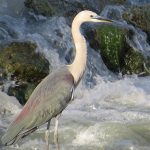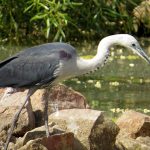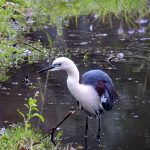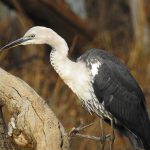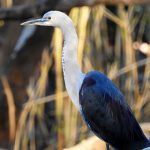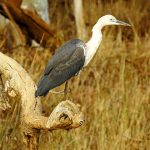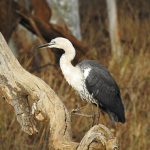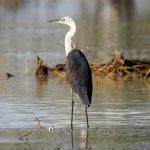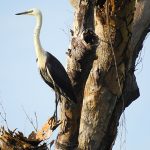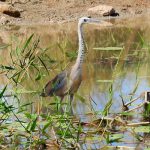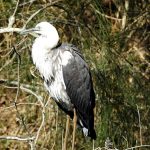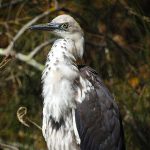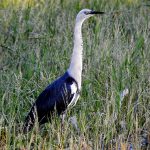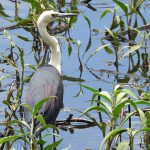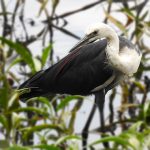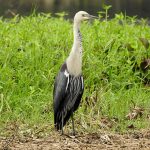WHITE-NECKED HERON
White-necked Herons are native to Australia and can be found throughout most of the continent. They prefer a variety of wetland habitats, including rivers, lakes, swamps, and estuaries.
These herons are known for their striking appearance. They have a distinct white neck and upper breast, contrasting with dark grey to black plumage on the rest of their body. They also have long legs, a sharp yellow bill, and yellow eyes.
White-necked Herons are typically solitary birds, often seen foraging alone or in small groups. They are known for their patience when hunting, standing still for extended periods and then striking quickly at prey.
Their diet primarily consists of aquatic creatures such as fish, frogs, crustaceans, and insects. They are excellent hunters and use their sharp beaks to spear their prey.
These herons usually nest in tall trees near water bodies. They construct large stick nests high in the canopy. Breeding season varies by location but typically occurs during the warmer months. White-necked Herons lay 2-4 eggs, and both parents take turns incubating them and feeding the chicks.
Sadly their populations can be affected by habitat loss and degradation, which are ongoing concerns in some areas of Australia. In the wild, White-necked Herons can live for several years, with some individuals reaching ages of up to 15 years or more.
While they are generally sedentary, some White-necked Heron populations in the northern parts of their range may undertake local migrations in response to changing water conditions and food availability.
Vocalisations include a loud croak, uttered as an alarm call. Other gutteral calls are uttered at the nest.

